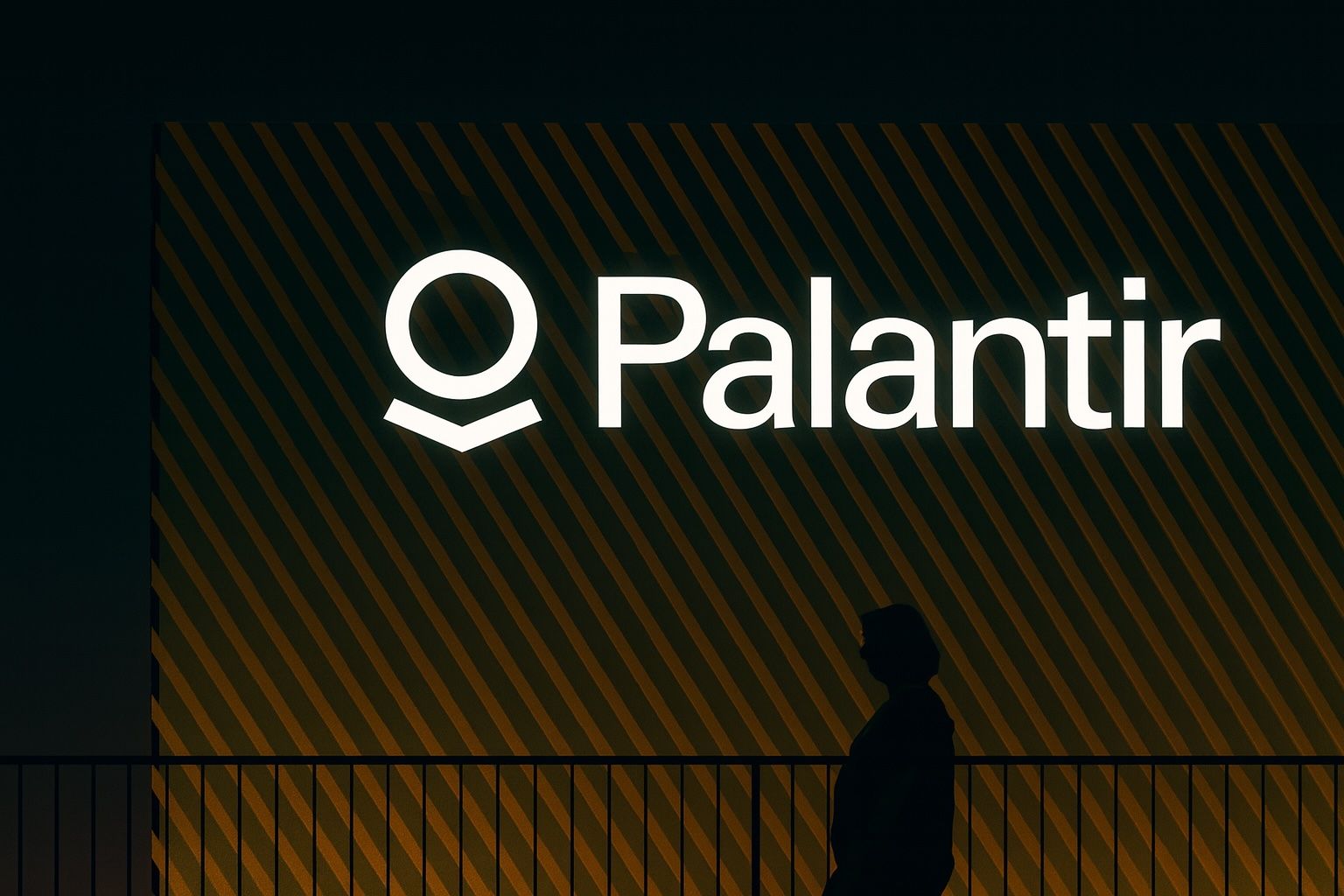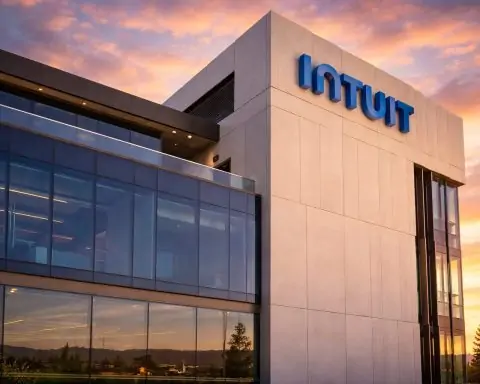- Red-hot rally: Palantir’s share price hovers around $178–$180 as of October 17, 2025, after nearly tripling year-to-date (+300% in 2025) [1]. The stock is one of this year’s top performers in tech, trading just below its all-time high (~$190 in August).
- Massive contracts: An AI-fueled deal spree underpins the surge. Palantir won a 10-year U.S. Army program worth up to $10 billion, a multi-year UK Ministry of Defence partnership (~£750 million to £1.5 billion), and a “game-changing” AI integration alliance with Boeing’s defense unit [2] [3] – cementing Palantir as a critical provider of military AI systems.
- New partnerships: The company is rapidly expanding beyond defense. On Oct. 16, Palantir announced a strategic partnership with Snowflake to integrate Snowflake’s AI Data Cloud with Palantir’s platforms, streamlining enterprise AI workflows. Earlier this month, healthcare firm OneMedNet selected Palantir’s AI platform for its clinical data network – further extending Palantir’s commercial reach [4] [5].
- Ongoing deal momentum: In just the past week, Palantir secured a $385.4 million contract with the U.S. Department of Veterans Affairs (awarded Oct. 10) and a $29.9 million task order from U.S. Immigration and Customs Enforcement (Oct. 15) [6]. These wins add to a drumbeat of government deals bolstering Palantir’s pipeline.
- Financial strength: Palantir’s fundamentals are catching up to the hype. Q2 2025 revenue jumped +48% year-on-year to $1.03 billion (its first $1B quarter) with $327 million in profit, prompting management to raise full-year revenue guidance to ~$4.15 billion [7]. The company only turned profitable in 2023 but now boasts robust growth and positive cash flow, reinforcing bullish sentiment.
- Analysts divided: Wall Street is sharply split on PLTR. Some bulls are hiking price targets above $200 – Piper Sandler just raised its 12-month target to $201 (Overweight) on strong AI demand [8] – and see Palantir as an “AI arms dealer” positioned for years of growth. But skeptics warn the valuation is “absurd,” with noted short-seller Citron Research arguing fair value is only ~$65–$70 [9]. The consensus rating is a cautious “Hold,” and at ~$180 the stock already trades above the ~$155 median analyst target [10].
- Sky-high valuation: At ~$180 per share, Palantir commands a market capitalization around $425 billion, translating to 100×+ forward sales and over 200× earnings – “one of the most expensive” valuations in recent market history [11]. Salesforce’s CEO even quipped that Palantir is the “most expensive enterprise software” stock he’s ever seen (trading at ~100× revenue) [12]. This lofty pricing has fueled bubble concerns, even as believers tout Palantir’s unique positioning in the AI boom.
- AI frenzy backdrop: Palantir’s rise comes amid a broader 2025 tech rally driven by AI hype. The Nasdaq Composite recently notched gains on blockbuster AI chip earnings (e.g. Nvidia) [13], and traders betting on potential Fed rate cuts have further lifted high-growth tech stocks [14]. However, a Bank of America survey indicates many investors fear an “AI bubble” may be forming [15] – with Palantir often cited as a poster child of exuberance.
Red-Hot Rally Fueled by AI Mania
Palantir Technologies has seen its stock go parabolic in 2025, transforming from a mid-cap data firm into a near half-trillion-dollar tech titan. Shares of PLTR currently trade around $178–$180 – about 3–4 times their price at the start of the year [16]. This meteoric rise (+300% YTD) vastly outpaces the broader market and has vaulted Palantir into the ranks of the most valuable tech companies. In fact, Palantir’s market value (roughly $425 billion at last count) is now comparable to or larger than legacy defense giants like Lockheed Martin, RTX, and Northrop combined [17]. As tech news outlet TS2 noted, “Palantir shares [are] around $175… making PLTR one of the hottest large-cap tech stocks” of the year [18].
What’s driving the frenzy? In a word: AI. Palantir has positioned itself as a core player in the exploding field of artificial intelligence and data analytics, which has been the market’s favorite theme all year. Investor enthusiasm for anything AI-related is running high – from chipmakers to software firms – and Palantir sits squarely at that intersection of big data and AI. “AI continues to come up with new alliances [and] good earnings… there’s no reason to change [the bullish] outlook on technology,” one strategist noted as the Nasdaq surged on strong tech earnings in mid-October [19]. This broader backdrop of AI optimism (plus hopes that easing inflation will lead the Federal Reserve to cut interest rates, boosting growth stocks) has created a rising tide lifting many tech boats, Palantir included [20].
Momentum and volatility: Palantir’s rally hasn’t been a smooth line upward – the stock has seen bursts of volatility that underscore both the hype and the jitters surrounding it. Case in point: on October 3, a leaked U.S. Army memo raised alarms about security “flaws” in a battlefield network system that Palantir is helping develop [21]. The internal Army report flagged “fundamental security” issues in a prototype, calling it “very high risk” [22]. When news of the leak hit, PLTR plunged ~7.5% in a single day as investors reacted to potential fallout [23]. However, the panic quickly dissipated – Palantir and its partner clarified that the memo referred to an outdated prototype and that the vulnerabilities had since been fixed [24]. A Palantir spokesperson emphasized no flaws were found in Palantir’s core platform, and the Army affirmed its commitment to the project. By the next trading session the stock bounced back ~3%, recovering much of the loss [25]. This episode highlights how hypersensitive the stock is to headlines. With Palantir’s valuation so stretched, even a whiff of bad news can spark a sell-off – yet bullish investors have been quick to “buy the dip” on any pullback, believing the overall AI story remains intact.
Big Deals from Pentagon to Silicon Valley
Palantir’s stunning rally has been underpinned by a steady drumbeat of major contract wins and partnerships across government and industry. In many ways, 2025 has been a breakout year for Palantir’s business development, with headline-grabbing deals arriving almost monthly:
- $10 Billion U.S. Army Deal: Over the summer, Palantir scored its largest contract ever – a monumental 10-year agreement with the U.S. Army valued at up to $10 billion [26]. Announced July 31, this Indefinite Delivery/Indefinite Quantity (IDIQ) deal consolidated 75 separate Army programs under one umbrella, dramatically deepening Palantir’s role in military data systems. It essentially makes Palantir a backbone software provider for Army intelligence and operational planning. The win was a huge validation of Palantir’s technology in the defense realm and signaled to investors that the company’s foothold in the Pentagon was expanding significantly.
- UK Ministry of Defence Partnership: In September, Palantir followed up with a blockbuster British defense deal – a multi-year partnership worth roughly £750 million (with potential investment up to £1.5 billion) to deploy Palantir’s AI and data platforms across the UK’s defense apparatus [27] [28]. Described as Palantir’s largest non-U.S. contract to date, this project will effectively make Palantir the “operating system” for UK defense analytics. Notably, the deal was announced during high-profile talks between U.S. and UK officials, underscoring Palantir’s rising geopolitical profile as allied nations look to adopt its technology [29]. For Palantir, it opens the door to more international defense work and showcases trust from a key U.S. ally.
- “Game-Changing” Boeing Alliance: It’s not just governments – major industry players are also embracing Palantir. On Sept. 23, Boeing’s Defense, Space & Security division unveiled a new partnership to integrate Palantir’s AI-driven data platform into Boeing’s aerospace and defense manufacturing operations [30]. Boeing’s defense chief Steve Parker hailed the Palantir-powered system as “game-changing,” noting it enables decision-making “not in weeks, but in days and hours” by leveraging AI to vastly speed up data analysis [31]. Palantir’s stock got a quick boost on that news [32], and analysts saw the alliance as a strong vote of confidence – a blue-chip defense contractor effectively anointing Palantir as its go-to AI partner for critical operations.
- U.S. Veterans Affairs & ICE Contracts: The deal momentum continued into October. Just last week, Palantir won a $385.4 million contract from the U.S. Department of Veterans Affairs to deploy its software for the VA’s National Center for Veterans Analysis and Statistics [33]. And on Oct. 15, the company landed a $29.9 million task order from U.S. Immigration and Customs Enforcement (ICE) to support the agency’s investigatory data system (“ImmigrationOS”) [34]. While smaller than the multi-billion-dollar deals, these contracts reinforce Palantir’s deepening penetration across U.S. government agencies – from defense to healthcare to law enforcement. They provide steady, long-term revenue streams and highlight how Palantir’s software is becoming mission-critical in diverse federal operations.
- Snowflake Partnership – Bridging Big Data Platforms: In a sign of its growing clout in the commercial tech arena, Palantir announced a high-profile tie-up with cloud data giant Snowflake (SNOW) on October 16. The strategic partnership links Snowflake’s AI Data Cloud with Palantir’s Foundry and new Artificial Intelligence Platform (AIP) [35]. This integration will allow enterprise customers to seamlessly use Palantir’s AI/analytics tools on data stored in Snowflake’s platform, without cumbersome data migration. One early customer, Eaton Corp, is already using the combined Palantir-Snowflake solution to deploy AI agents that improve business metrics like customer retention and reduce costs [36] [37]. The news was met positively – Snowflake’s stock jumped ~2% on the announcement as investors cheered the collaboration [38]. For Palantir, partnering with a cloud data leader like Snowflake both validates its tech in the broader software ecosystem and opens access to Snowflake’s corporate customer base. It shows Palantir isn’t content to be just a government contractor; it’s angling to be a central player in enterprise AI pipelines.
- Healthcare & Energy Deals: Palantir is also pushing into new verticals. In early October, Minnesota-based OneMedNet chose Palantir’s AIP to power its real-time clinical data network for hospitals [39]. This multi-year healthcare deal taps into the booming market for AI in medicine (projected ~$868B by 2030) and demonstrates Palantir’s ability to handle sensitive health data. Around the same time, Palantir inked an agreement to develop a $100 million “AI nuclear operating system” for a clean energy project, applying its tech to optimize power plant operations [40]. From hospitals to nuclear plants, Palantir is showing that its platforms can drive efficiencies in virtually any data-intensive domain.
All told, these wins paint a picture of surging demand for Palantir’s software across sectors. As TS2.tech analysts put it, the “steady drumbeat of contract announcements” – from the Army and UK Ministry of Defence to Boeing, Snowflake, and healthcare firms – illustrates that Palantir’s technology is in high demand across both government and industry [41]. Each major deal has seemingly propelled the stock higher, feeding the bull narrative that Palantir is becoming an indispensable AI platform-of-choice for large institutions. (It also underscores why Palantir’s dual focus on government and commercial clients is so significant – the company is firing on both cylinders.)
However, these big contracts also come with big responsibilities. Palantir’s deep ties to defense mean any hiccup with these projects can rattle investors (as seen with the Army memo scare). Success will require flawlessly executing on these deployments. The stakes are high: Palantir’s reputation – and share price – now ride on delivering value under some of the world’s most scrutinizing customers.
Financial Results Catch Up to the Hype
For much of its early history, Palantir was often criticized for lofty promises but underwhelming financials. That narrative flipped in 2025. The company’s latest earnings show real numbers to back up the stock’s surge, giving bulls further ammunition.
Breakout Q2 2025: In August, Palantir reported its first-ever $1 billion quarter in revenue [42]. Second-quarter sales hit $1.03B, up a whopping +48% year-over-year – an acceleration in growth that blew past analyst expectations. Perhaps most importantly, Palantir is now consistently profitable. Q2 delivered $327 million in GAAP net income [43], and the company’s operating margins have been climbing as contracts scale. This marked the third straight quarter of GAAP profitability for Palantir (after years of losses since its 2020 IPO), confirming that the business has reached an inflection point. Palantir also generates healthy free cash flow, easing prior concerns about cash burn.
Buoyed by the strong results, management raised its full-year 2025 revenue guidance to ~$4.14–$4.15 billion [44], implying ~35% growth for the year and signaling confidence in continued momentum. CEO Alex Karp struck an upbeat tone on the earnings call, saying the company is “very, very bullish on America” – highlighting surging demand from U.S. government agencies and companies for Palantir’s AI-driven platforms [45]. Notably, U.S. commercial revenue nearly doubled (+93% YoY in the first half of 2025) as enterprise adoption of Palantir’s software accelerated [46]. Government revenue, too, jumped over 50% in the U.S., thanks to defense and intelligence contracts [47]. Those growth rates validate that Palantir’s recent contract wins (like the Army deal) are translating into real top-line expansion.
The AIP factor: A key driver behind the financial uptick is Palantir’s new Artificial Intelligence Platform (AIP) – essentially an AI toolkit that lets organizations deploy large language models (LLMs) and other AI applications on their private data with security and control. Launched in early 2023, AIP has quickly become the centerpiece of Palantir’s product suite [48]. It allows clients to harness cutting-edge AI (like GPT-style models) on sensitive datasets that can’t be handed to public clouds, a capability much in demand. Many of Palantir’s recent deals (the Army’s battlefield network, the VA and ICE contracts, OneMedNet’s system, etc.) specifically leverage AIP to build AI-powered decision platforms [49]. Palantir describes AIP as the “central nervous system” of its growth strategy [50] – a unifying backbone that ties together its legacy Gotham (government) and Foundry (commercial) systems with new AI prowess.
By all accounts, Palantir’s heavy investment in AI capabilities is paying off. The company has touted projects like deploying AI-driven “TITAN” autonomous military vehicles for the Army [51] and integrating LLMs into counter-terrorism intelligence workflows, showcasing the real-world impact of its tech. This focus on practical AI solutions differentiates Palantir from many peers: it’s not just selling theoretical AI, but deployed, domain-specific AI tools that deliver results (whether that’s detecting insurgent threats or optimizing hospital data). The buzz around AIP has also given Palantir a certain cachet among investors as an “AI pure-play” – aligning it with the hottest trend in tech.
Eyes on Q3 and beyond: The next big test for Palantir will be its Q3 2025 earnings, due in early November (the company has set November 3, 2025 for its report). After the huge Q2 beat, expectations are high that Palantir will show continued strong growth through the third quarter. Analysts will be watching whether U.S. commercial revenue keeps accelerating and if government contract revenue flows in steadily from those new deals. Any sign of a slowdown or hiccup in Q3 could jolt the stock, given how much optimism is baked into the price. Conversely, another “beat-and-raise” quarter could further cement Palantir’s fundamentals under the rally. As one market observer noted, with Palantir’s valuation so elevated, “any meaningful slowdown in growth could pressure the stock” – so the company will need to execute near-flawlessly to justify its price [52] [53].
Experts and Investors: Split on Palantir’s Future
The debate around Palantir has become one of the fiercest on Wall Street. Is this the next tech superpower in the making, or a hype-fueled bubble waiting to burst? Analysts and investors are deeply divided, with opinions veering from euphoric to skeptical:
- The Bulls’ case: Optimists see Palantir as a unique, generational company at the center of the AI revolution. Wedbush Securities has repeatedly named Palantir a top pick and argues we are in the early innings of an “AI arms race” that could propel Palantir for years. Star tech analyst Dan Ives of Wedbush famously likened the current AI investment cycle to an “all-night party that’s only at 10:00 p.m.” – in other words, far from over [54]. Bulls highlight Palantir’s “two engines” of growth – its dominance in government contracts and its growing commercial business – which give it a formidable advantage [55]. They note that Palantir is grabbing market share as an “AI arms dealer” to both militaries and corporations, building a client base and data assets that could be incredibly hard to replicate. Bank of America recently raised its PLTR target to $215, one of the Street’s highest, citing accelerating demand and Palantir’s first-mover status in enterprise AI deployments [56]. Proponents argue that if Palantir continues executing, it could evolve into the default platform for AI-driven decision making – an “AI goldmine” that might ultimately justify today’s rich valuation through explosive future earnings [57]. Some even compare Palantir’s potential to early-stage Google or Microsoft in terms of defining a new software category.
- The Bears’ case: On the flip side, skeptics assert that Palantir’s stock price has far outrun its fundamentals. While acknowledging Palantir is a strong company, bears point to the extreme valuation metrics – 110× forward sales, 210× earnings – that dwarf even other high-growth tech darlings [58]. Notable short-seller Andrew Left of Citron Research has slammed Palantir’s valuation as “ludicrous” and argues the stock “should be only ~$65–$70” based on a realistic view of its business [59]. That implies more than 60% downside from current levels. Critics emphasize that Palantir’s revenue, while growing, is still around $4 billion annually – a fraction of what similarly valued companies generate – and much of its government business (about half of revenue) can be lumpy or subject to political budget cycles. Competition is also rising in the data analytics space (from cloud providers, startups, and other incumbents), which could pressure Palantir’s growth or margins over time. Furthermore, as an expensive momentum stock, Palantir could be vulnerable if market conditions change. “Great company, crazy stock price” is essentially the bear mantra. Even some neutral observers warn that any stumble – a missed earnings target, a lost contract, or a broader tech sell-off – could trigger a sharp correction when a stock is priced for perfection [60] [61]. In fact, several insiders have used the 2025 rally to cash out shares, perhaps signaling they see better value in taking profits. (In August, Palantir co-founder Stephen Cohen sold ~99% of his holdings – nearly 192,000 shares around $151 each – for ~$29 million [62]. The COO also sold $56M worth that month [63]. And a Jefferies analysis noted CEO Alex Karp offloaded ~$45 million in stock in early October after selling ~$2 billion last year.) Such sales don’t necessarily mean the company’s in trouble, but they’ve raised eyebrows about insiders’ confidence in the current valuation.
- Wall Street consensus: The polarized viewpoints make Palantir’s analyst coverage unusually mixed for a company of its size. According to MarketBeat, as of mid-October Palantir had 5 “Buy” ratings, 15 “Hold” and 2 “Sell” – meaning most analysts are on the fence with neutral stances [64]. Price targets are all over the map: on the low end, some see Palantir worth under $100 or even sub-$50, whereas bulls on the high end are north of $200 [65]. The average 12-month target clusters around ~$140–$155 per share [66], notably below the current trading price. In short, many analysts think the stock has gotten ahead of itself, at least in the near term. It’s rare to see a $400B company with such a wide dispersion of targets – underscoring that Palantir is tricky to value, straddling the line between AI-fueled growth story and hype-driven meme stock. Importantly, there’s now a large contingent of institutional investors in Palantir (about 45–46% of the float is owned by funds and firms) [67], including some prominent hedge funds that jumped in this year. Their votes of confidence have helped legitimize Palantir on Wall Street, but those investors will also be quick to punish any missteps.
Outlook: High Hopes vs. High Valuation
Palantir’s remarkable run in 2025 encapsulates both sky-high optimism and significant risk. On one hand, the company is firing on all cylinders: revenue growth is accelerating, huge contracts are rolling in, and Palantir’s technology is at the forefront of the AI wave. The world’s largest institutions – from the U.S. Army to Fortune 500 firms – are increasingly relying on Palantir’s platforms to power critical operations. This suggests Palantir has tapped into something truly valuable: the need for integrated AI-driven decision systems across defense, government and business. The tailwinds are certainly in its favor. Global defense spending is rising, and Palantir has positioned itself as a go-to contractor for modern “digital warfare” needs [68]. At the same time, corporations in healthcare, finance, energy and beyond are racing to adopt AI – a trend that could represent hundreds of billions in IT investment over the next decade, a sizable chunk of which Palantir hopes to capture [69]. In short, the addressable market for Palantir’s services is enormous and still growing. If the company continues to execute and innovate (for instance, enhancing AIP, moving into new domains, and maintaining its edge in AI), there’s a credible path for Palantir to eventually “grow into” its valuation by delivering years of stellar results.
On the other hand, investors must reckon with the price being paid for this growth. At ~$180 per share, Palantir is valued like few companies before – any projection of future profits is built on the assumption of many years of blistering expansion and market dominance [70]. There is zero margin for error. Any indication that Palantir’s growth is slowing, or that competitors are cutting into its business, could deflate the stock’s premium quickly. The broader market’s mood also matters: in a low-rate, high-liquidity environment, investors have been willing to bid up “story” stocks like Palantir. But if interest rates rise or if an external shock sends tech tumbling, high-multiple stocks are often the first to get hit. Even internally, Palantir’s close alignment with government and defense means political or regulatory changes (such as shifting budgets, or privacy and AI regulations in Europe [71]) could create headwinds. In Europe, for instance, Palantir’s commercial growth has been slower, partly due to stricter data laws [72] – reminding that not every market will be as accessible as the U.S.
For now, Palantir’s story as of October 2025 is one of extraordinary momentum and also extraordinary expectations. The company’s next steps will be closely watched: upcoming earnings, the rollout of that massive Army program, new partnerships (will Palantir team up with other tech giants or make acquisitions?), and the ability to maintain its tech lead as others chase the AI opportunity. Bulls say this is just the beginning of Palantir’s ascent as a premier AI platform, while bears caution that we’ve seen similar hype cycles fizzle before in tech. As TS2.tech observed, Palantir today embodies both the “AI goldmine” excitement and bubble risk that define the current market [73].
Bottom line: Palantir has indisputably had a banner year – emerging as one of the stock market’s biggest winners on the back of AI euphoria and real business wins. The company’s transformative deals and improving finances suggest it could be a long-term powerhouse in how governments and businesses use data. Yet the stock’s white-hot rally also means any stumble could be dramatic. For investors and analysts alike, Palantir has become a high-stakes wager on the future of AI: it offers the promise of exceptional rewards, but with plenty of white-knuckle moments likely along the way. In the coming weeks and months, expect every Palantir development – from earnings to contract announcements – to be scrutinized as the market tries to determine if this stock’s phenomenal rise is justified or if gravity will soon take hold.
Sources: TS2 TechStock² analyses [74] [75] [76] [77]; MarketBeat consensus data [78]; Reuters and Bloomberg reports [79] [80]; company press releases and filings. (All linked sources provide further detail on the news and figures discussed.)
References
1. ts2.tech, 2. ts2.tech, 3. ts2.tech, 4. ts2.tech, 5. markets.financialcontent.com, 6. markets.financialcontent.com, 7. ts2.tech, 8. ts2.tech, 9. ts2.tech, 10. ts2.tech, 11. ts2.tech, 12. ts2.tech, 13. ts2.tech, 14. ts2.tech, 15. ts2.tech, 16. ts2.tech, 17. www.reuters.com, 18. ts2.tech, 19. ts2.tech, 20. ts2.tech, 21. ts2.tech, 22. ts2.tech, 23. ts2.tech, 24. ts2.tech, 25. ts2.tech, 26. markets.financialcontent.com, 27. ts2.tech, 28. ts2.tech, 29. ts2.tech, 30. ts2.tech, 31. ts2.tech, 32. ts2.tech, 33. markets.financialcontent.com, 34. markets.financialcontent.com, 35. ts2.tech, 36. www.asktraders.com, 37. www.asktraders.com, 38. www.asktraders.com, 39. markets.financialcontent.com, 40. ts2.tech, 41. ts2.tech, 42. ts2.tech, 43. ts2.tech, 44. ts2.tech, 45. ts2.tech, 46. markets.financialcontent.com, 47. markets.financialcontent.com, 48. markets.financialcontent.com, 49. markets.financialcontent.com, 50. markets.financialcontent.com, 51. markets.financialcontent.com, 52. ts2.tech, 53. ts2.tech, 54. ts2.tech, 55. ts2.tech, 56. ts2.tech, 57. ts2.tech, 58. ts2.tech, 59. ts2.tech, 60. ts2.tech, 61. ts2.tech, 62. ts2.tech, 63. ts2.tech, 64. ts2.tech, 65. ts2.tech, 66. ts2.tech, 67. ts2.tech, 68. www.reuters.com, 69. ts2.tech, 70. ts2.tech, 71. markets.financialcontent.com, 72. markets.financialcontent.com, 73. ts2.tech, 74. ts2.tech, 75. ts2.tech, 76. ts2.tech, 77. ts2.tech, 78. ts2.tech, 79. ts2.tech, 80. ts2.tech







